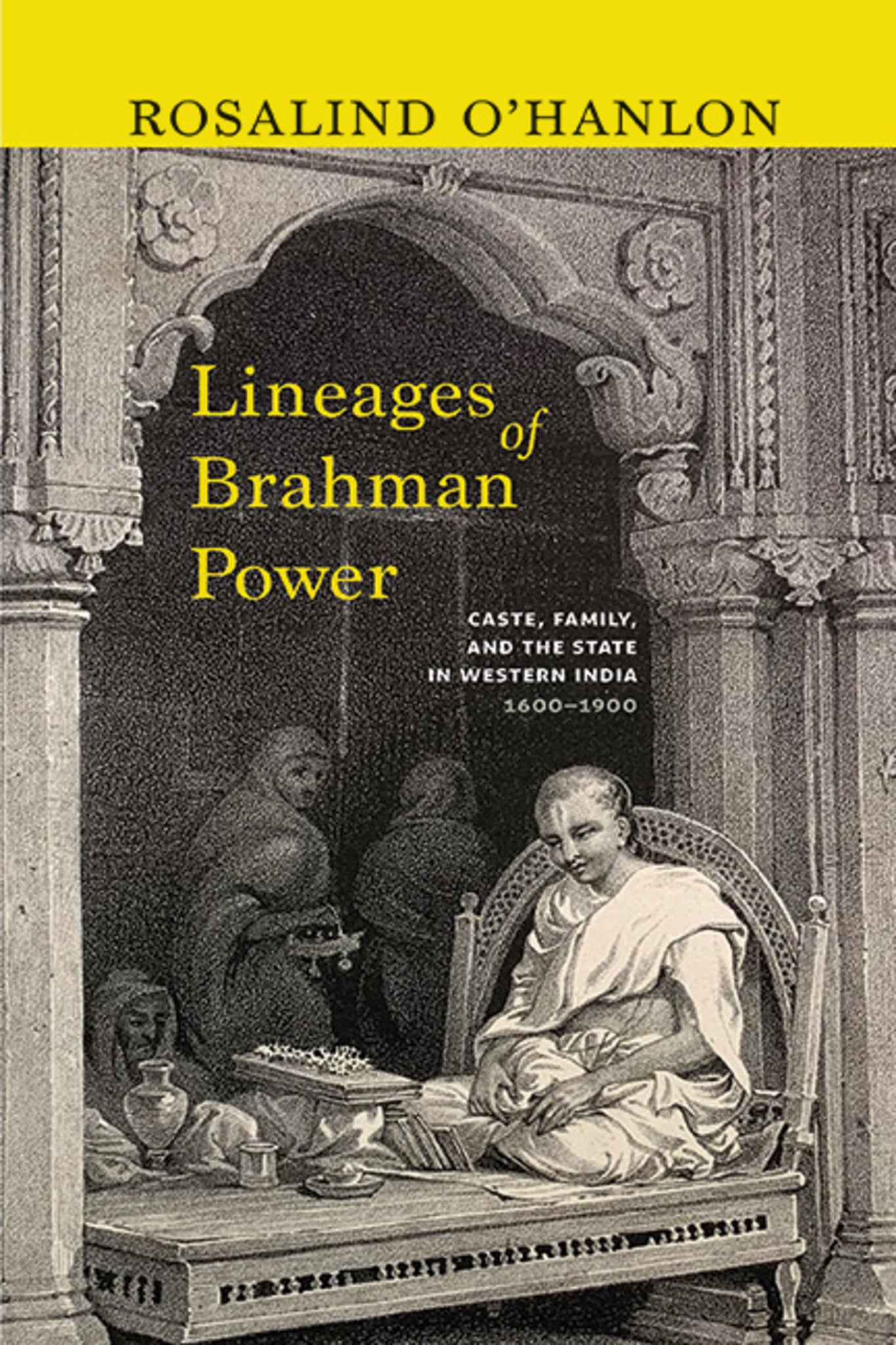We're sorry. An error has occurred
Please cancel or retry.
Lineages of Brahman Power

Some error occured while loading the Quick View. Please close the Quick View and try reloading the page.
Couldn't load pickup availability
- Format:
-
01 July 2025

Traces the role that western India's influential Brahman communities played in shaping India's modern caste system.
Western India's Brahman communities have played a key role in the shaping of India's modern caste system. In Lineages of Brahman Power, Rosalind O'Hanlon focuses on their rise to power between the seventeenth and nineteenth centuries, exploring the ways in which some Brahman intellectuals sought to defend the hierarchies of caste against the social changes of the early modern era while others looked for compromise. Drawing on Marathi vernacular sources, O'Hanlon also examines the household, family, and lineage as key sites for Brahman accumulation of skills and cultural capital. This approach also reveals Brahman identity itself as contested, as Brahman subcastes competed with each other not only for service positions and state patronage but also to define who could actually be considered a Brahman, and of what kind. This focus on Brahman social history is novel, in that most historians focus on Brahman power as emerging out of their religious prestige and dominance of intellectual and literary cultures. The emphasis on Brahman identity itself as complex and internally contested also helps to avoid essentializing Brahman power as always and everywhere the same.


"This book demonstrates O'Hanlon's mastery of both the sweeping macro-study and the lapidary micro-study. It contains large comparisons relevant to all scholars of South Asia and authenticates them through detailed analyses of particular texts and episodes. This book is indispensable for specialists in South Asia and valuable for historians everywhere." — Sumit Guha, University of Texas, Austin
"Lineages of Brahman Power knits together observations on religion, politics, law, gender, literature, knowledge, and family to explore the deep influence of a heterogeneous Brahman ecumene in the early modern to modern periods. Centered in Maharashtra, this ecumene deeply influenced political and social worlds, from the formation of the Hindu Right to liberal and progressive critiques of caste and gender inequality. This book reveals the highly contentious and diverse construction of Brahmanness within the powerful sphere of caste patriarchy in India." — Christian Lee Novetzke, University of Washington
Preface
Acknowledgements
Introduction: Between Brahman and Sudra in Colonial Western India
Brahmin Families in Motion
1. Speaking from Shiva's Temple: Banaras Scholar Households and the Brahman "Ecumene" of Mughal India
2. Entrepreneurs in Diplomacy: Maratha Expansion in the Age of the Vakil
Family, Gender, and the State
3. Disciplining the Brahman Household: The Moral Mission of Empire in the Eighteenth-Century Maratha State
4. Brahman Lineages Beyond the Mughal Court
5. Gotmai's Suit: A Brahman Woman of Property in Seventeenth-Century Western India
Caste and the "Early Modern"
6. What Makes People Who They Are? Pandit Networks and the Problem of Livelihoods in Early Modern Western India (with Christopher Minkowski)
7. The Social Worth of Scribes: Brahmans, Kayasthas, and the Social Order in Early Modern India
8. Discourses of Caste Over the Longue Durée: Gopinatha and Social Classification in India c. 1400–1900 (with Gergely Hidas and Csaba Kiss)
Oral Traditions and Documentary Cultures
9. Performance in a World of Paper: Puranic Histories and Social Communication in Early Modern India
10. In the Presence of Witnesses: Petitioning and Judicial "Publics" in Western India, c. 1600–1820
Index



